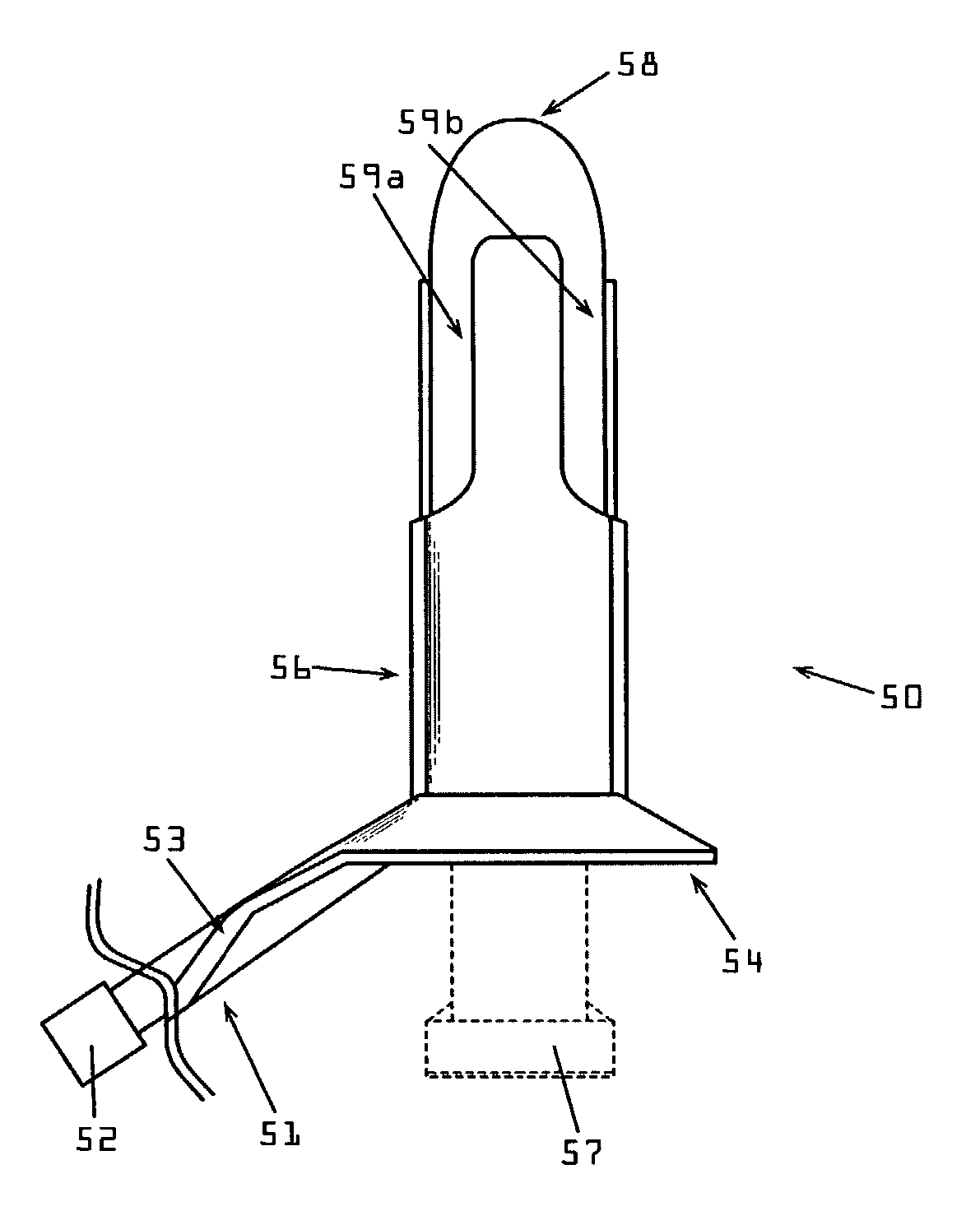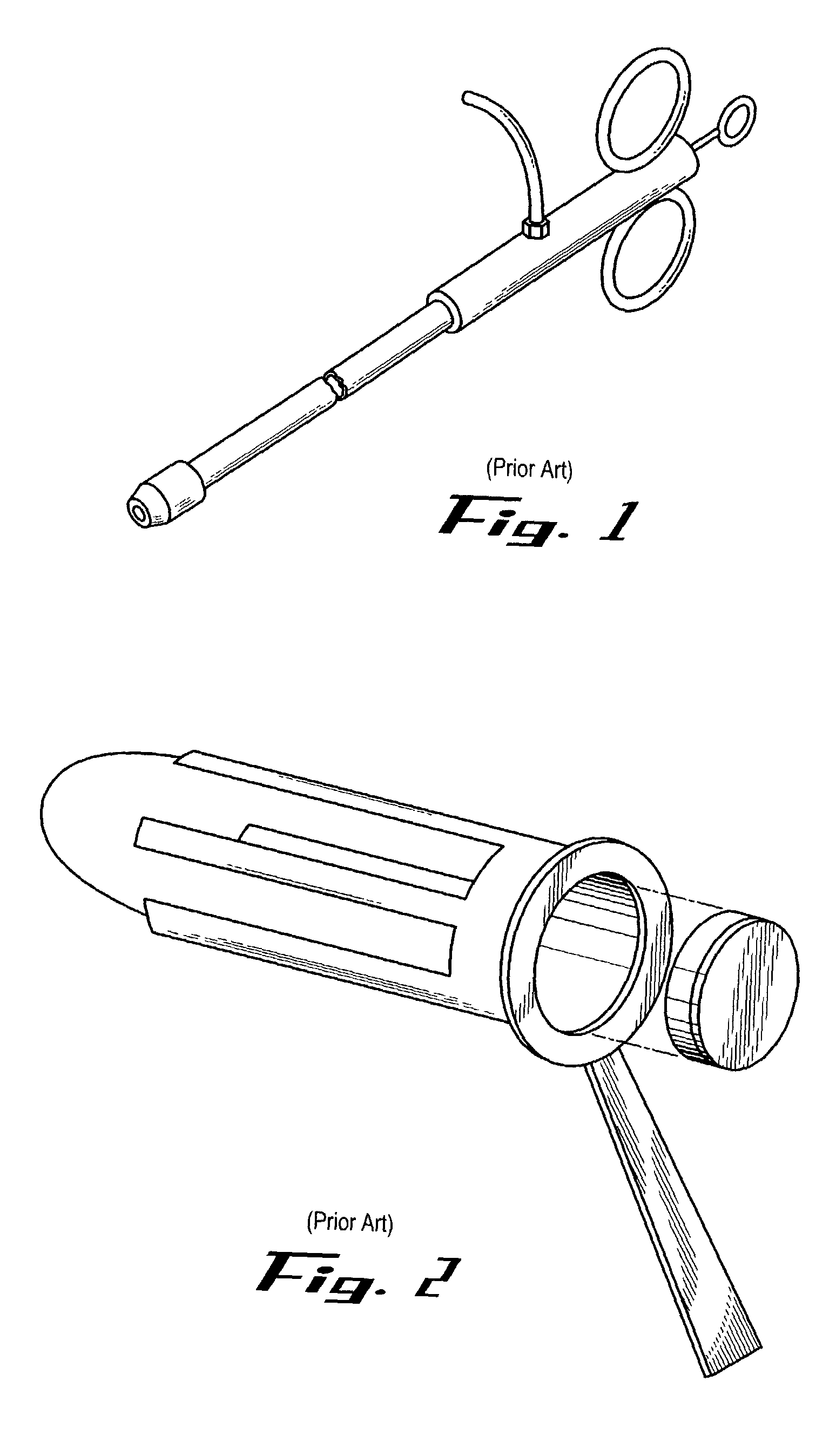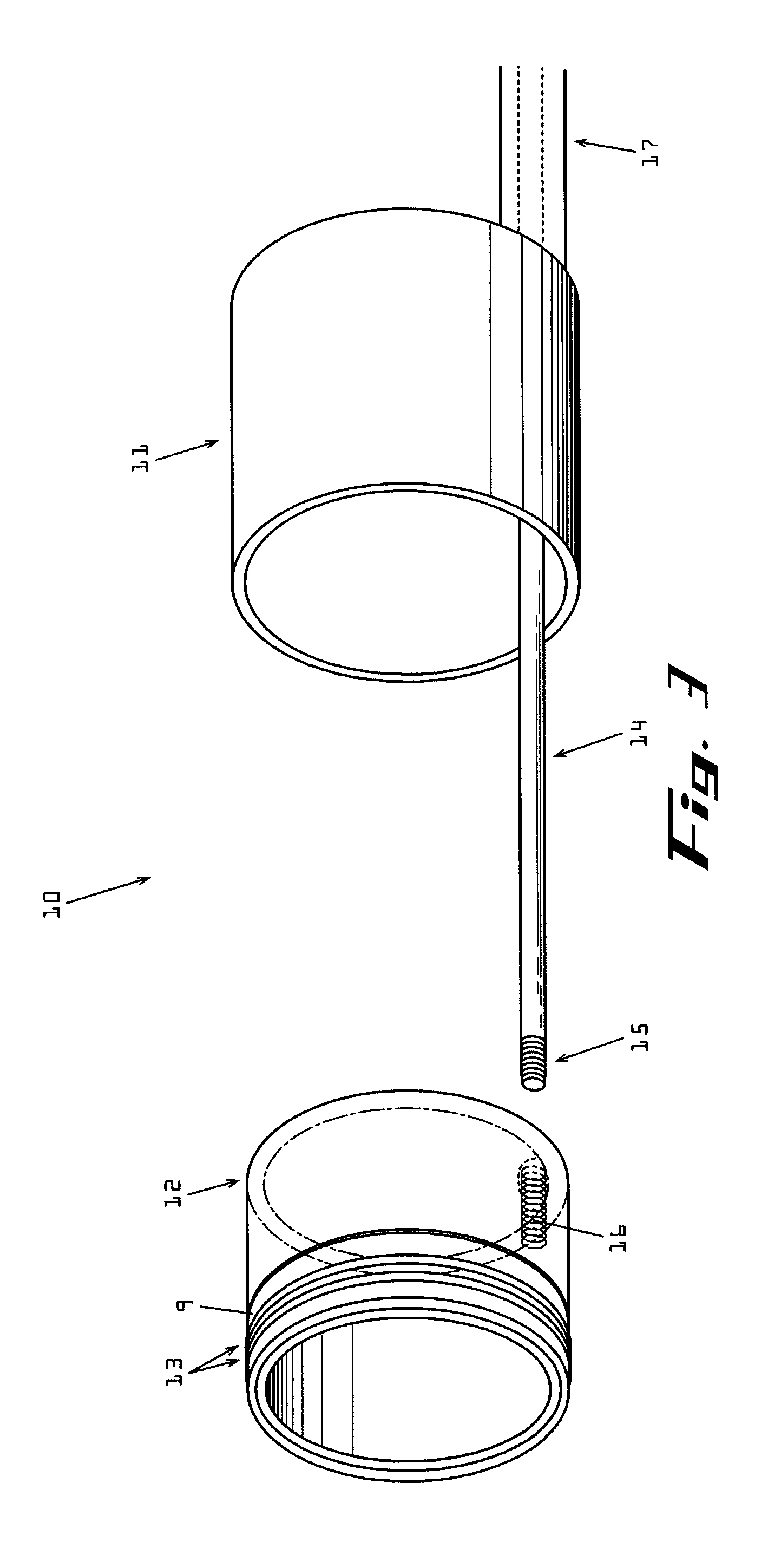Multiple band ligator and anoscope system and method for using same
- Summary
- Abstract
- Description
- Claims
- Application Information
AI Technical Summary
Benefits of technology
Problems solved by technology
Method used
Image
Examples
Embodiment Construction
[0027]As shown in FIG. 3 a hemorrhoidal ligator device for applying multiple rubber bands to desired tissue includes a head assembly 10 for protrusion into the internal cavities of a life form, where the head assembly10 includes an inner cylinder 12 and an outer cylinder 11 arranged in telescopic slidable relationship with respect to each other. The inner cylinder 12 includes an end portion that protrudes beyond the outer cylinder 11 and which inner cylinder 12 is preloaded with a plurality of rubber bands 13. The outer cylinder 11 has an inner dimension for engaging the rubber bands 13 mounted on the end portion of the inner cylinder 12 such that the rubber bands are urged off the end portion of the inner cylinder 12 when said outer cylinder 11 is slid about the inner cylinder 12.
[0028]The ligator device further comprises a shaft assembly 30 including a central rod 14 having a first end connected to the inner cylinder 12 and a second end for protruding out beyond the internal aspec...
PUM
 Login to View More
Login to View More Abstract
Description
Claims
Application Information
 Login to View More
Login to View More - R&D
- Intellectual Property
- Life Sciences
- Materials
- Tech Scout
- Unparalleled Data Quality
- Higher Quality Content
- 60% Fewer Hallucinations
Browse by: Latest US Patents, China's latest patents, Technical Efficacy Thesaurus, Application Domain, Technology Topic, Popular Technical Reports.
© 2025 PatSnap. All rights reserved.Legal|Privacy policy|Modern Slavery Act Transparency Statement|Sitemap|About US| Contact US: help@patsnap.com



